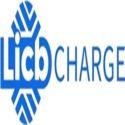Notifications

6 minutes, 26 seconds
-59 Views 0 Comments 0 Likes 0 Reviews

As electric vehicles (EVs) become more popular, choosing the right EV charger is essential to meet your needs and maximize charging efficiency. Two of the most commonly discussed types of chargers are single-phase and three-phase chargers. Understanding how they differ can help you make the best decision based on your home setup, charging speed requirements, and budget.
Single-Phase EV Chargers
Single-phase chargers operate on a single alternating current (AC) waveform, which is the standard electrical setup in most residential homes. These chargers typically have power outputs ranging from 3.7 kW to 7.4 kW, meaning they deliver 3.7 to 7.4 kWh of energy to your EV battery per hour of charging, depending on the charger’s capacity and the vehicle’s compatibility.
Single-phase chargers only require one hot wire to function and usually operate on Level 2 charging circuits. They draw a current of 15 to 40 amps and are perfect for overnight home charging, offering ample power for daily commuting. While they charge slower than three-phase chargers, they are a reliable and cost-effective solution for most residential users.
Three-Phase EV Chargers
Three-phase chargers utilize three alternating current waveforms, typically available in commercial and some high-capacity residential settings. These chargers can deliver higher power outputs, ranging from 11 kW to 22 kW or more. This means that in just one hour, a three-phase charger can provide between 11 to 22 kWh of energy to your EV battery, making them ideal for those who need faster charging.
Three-phase chargers require three hot wires to operate and distribute the load equally across all three phases of the electrical system, ensuring optimal efficiency. They are best suited for commercial use, fleet operations, or homes with three-phase electrical infrastructure.
Charging Speed The primary difference between single-phase and three-phase chargers is the charging speed. Three-phase chargers deliver much higher power, significantly reducing the time it takes to charge your vehicle. For example, a single-phase charger might take 10 hours to fully charge a vehicle, while a three-phase charger can complete the same task in 3 to 5 hours.
Suitability
Single-Phase Chargers: These are ideal for residential users who need overnight charging. They provide adequate power for typical daily driving and are compatible with most home electrical systems.
Three-Phase Chargers: Best suited for commercial settings, fleet operations, or households with higher electrical demands. They are perfect for users who need faster charging times and are also commonly used for high-demand applications.
Cost Implications Single-phase chargers are generally more affordable to install and maintain because they require less complex electrical infrastructure. Three-phase chargers, however, come with higher installation costs, especially if the necessary three-phase power setup isn't already in place. Despite the higher upfront costs, the faster charging capabilities of three-phase chargers may be worth the investment for those who prioritize quicker charging.
kWh Ratings The kWh rating of a charger indicates how much energy it delivers to the EV battery per hour of charging. Single-phase chargers typically provide up to 7.4 kWh per hour, while three-phase chargers can deliver up to 22 kWh per hour or more, making them better suited for users with larger battery capacities or those in need of faster charging.
Using Three-Phase Cables for Single-Phase Charging Three-phase cables are compatible with single-phase charging setups, offering flexibility for users who may upgrade their infrastructure in the future. However, the reverse is not possible—single-phase cables cannot be used for three-phase charging.
Type 1 Charging Cables Type 1 charging cables are designed for single-phase charging. These cables are relatively rare and typically found on certain vehicle models like the Kia Soul EV or Peugeot iOn. With a maximum power output of 7.4 kW, they are suitable for residential charging needs.
Type 2 Charging Cables Type 2 cables are more versatile and can be used in both single-phase and three-phase setups. Depending on the model, they can support both single-phase and three-phase charging, or just single-phase. If you have access to a three-phase charging station, make sure to choose a Type 2 cable that supports three-phase charging to maximize efficiency and reduce charging times.
The choice between single-phase and three-phase chargers largely depends on your charging needs, budget, and infrastructure. Single-phase chargers are affordable and ideal for most residential users, while three-phase chargers offer faster charging speeds and are better suited for commercial or high-demand settings.
When selecting an EV charger and cable, consider factors like the power rating, compatibility, and whether a faster charging option is necessary for your lifestyle. By understanding the differences between single-phase and three-phase chargers, you can make an informed decision that best supports your electric mobility journey.
China EV Chargers EV Charger Manufacturer Smart EV Chargers Electric Car Chargers Electric Vehicle Chargers Electric Car Charging Stations

